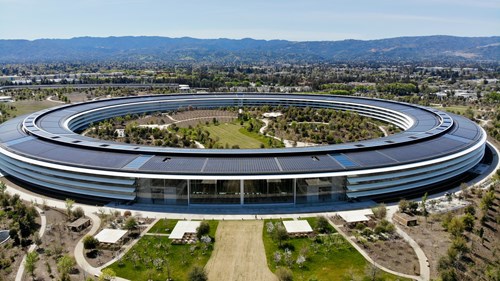Tuesday, 20 August 2019
Looking back at 8 years since the infamous 'Why Software is Eating the World' Wall Street Journal article by Marc Andreessen, it is clear to see how software is shaping multiple industries and everyday lives. Our 4-part report looks into these worldly changes.
Looking Back
Software is eating the world. This was the thought of Marc Andreessen when he wrote up his thoughts on how the world was changing back in 2011. Highlighting how the world was past the ‘dot-com bubble’ of the 90s, Marc discussed how we were seeing a new bubble was upon us, a software revolution - emanating from the sunny hills of Silicon Valley, California.
Silicon Valley in California is world-renowned as the Western world’s, if not most of Earth’s “technology district” - housing companies from start-ups to well-established household names such as Google, Facebook, Microsoft and more. These companies are the ones dominating the world economy.
The article pointed a seismic shift in the way companies were running, reducing the use of machines and man-power to software that automates and can efficiently do the work, reducing overheads whilst maintaining the ability to remain efficient. In the case of expansion or changes to business methods, all it takes is a software update or code to be altered in the software and the system is ready to go.
Through each piece of either commercially available or bespoke piece of software, the workplace focus, in particular, tends to lean more towards software as opposed to hardware as had previously been the case. Companies are testing applications and software models designed to help them run more efficiently, cutting out the middle-man and on some occasions, cutting out the man completely.
Perhaps 10 years ago, even whilst the technology we have in place now was by-in-large already there, it wasn’t being maximised or taken advantage of. The need for a physical presence was seen as a priority, with an online presence seen as just a compliment of a company’s existence. Today, it is the opposite.
Software is affecting many areas of business which explains its incredible growth in world economies. Software isn’t just beneficial to the operational/manufacturing side of a business. It’s also beneficial to head office divisions in order to stay on top of figures and production, the data side of a company sensing any patterns in the software or opportunities to capitalise on certain data points. This follows through to marketing who can work with this data and of course higher-ups who are able to access data live themselves in order to be aware of what is going on from the ground up of a company.
Without software and software testing, systems can fail to be fully functional, updates can cause crashes or malfunctions – potentially leading to loss of business or even worse – the collapse of a business if not fixed or planned around.
With this growing importance in ensuring software, whether local or web-based, for small, medium or large companies – it is clear to see how the growth of software has led to the current software revolution.

The Rise of Software Companies
Andreessen highlighted in his article the collapse of famous book store Borders as an example. The company negotiated for Amazon to handle their online orders as they were seen as “non-strategic and unimportant”, virtually committing suicide in hindsight without realising it.
Whilst also the world’s largest bookstore, Amazon is a software company. Their offerings include their Prime video and audio libraries, multiple apps as well as other services such as Prime delivery and of course – their retail website.
However, the main reason Amazon is seen as a software company is mainly in part thanks to one of their lesser-known commercial products, but an industry-renowned tool of Amazon Web Services (AWS).
AWS accounts for an estimated 56% of Amazon’s revenue in 2018. Given that Amazon in 2019 was published by the Financial Times as the world’s most valuable brand, leading other software giants such as Apple, Google, Microsoft, and Facebook in 2nd, 3rd, 4th and 5th respectively.
At the time of the article, Amazon was 14th on the same list, but the rise of software companies was already in effect.
In 2011, the top 10 most valuable companies included technology companies but also featured food (McDonald's), drinks (Coca Cola), cigarettes (Marlboro) and energy (General Electric) companies. Other technology companies were involved with hardware and telecoms such as IBM, AT&T and China Mobile Ltd. This left Apple (1), Google (2) and Microsoft (4) as the only software companies on this list.
Go back 10 years further to just after the millennium and post the 90s dot-com bubble, and only Microsoft make the top 10 as a software company. Technology companies were present in the form of IBM, Nokia, Intel and AT&T – all renowned for their hardware. Other companies in the top 10 include companies still seen as massive by even 2019 standards which are Coca Cola, General Electric, Disney, Ford, and McDonald's. Of the non-technology companies, only Ford are not in the top 16 in the world today.
Given the powerful rise of some of the technology companies, in specific the software companies, and the software revolution we appear to be in now, in 10 years’ time, there might be a new software company competing with the likes of Facebook, Twitter, Microsoft, Google, Apple, and Amazon.
Looking further ahead into the future, in time, these companies might be seen as the grandfathers of the software revolution.

Is Software the Problem or the Solution?
As software companies take over the world, the ever-present argument of will technology and AI ever mean that humans are not needed in jobs requiring manual labour or human-interaction? Some have argued that this is negative and that unemployment will go up as companies switch to machines. The other side of the coin has found that there are more jobs coming about because of the increased efficiency and revenues coming into these companies. Each one is unique.
A modern example of Software innovations has led to trucks that can drive autonomously. Testing these being able to get from A to B without a human behind the wheel, this could lead to truck drivers losing their jobs. McKinsey estimated that 50% of jobs in the workplace could be automated by existing technology, predicting up to 400 million people globally losing work by 2030.
Whilst this is negative, to the unemployment market and especially the number of jobs in particular industries – this also leads to new roles for managing the technology, fixing the technology, overseeing the technology and more. The trucking industry in the example above is just an example of a recent industry that is changing thanks to technology.
This isn’t a new argument though. It is one that has been around for many years and will be around for many more.
For example, there used to be lots of video rental stores on the high-street - then video streaming was introduced. There used to be many travel agents on the high-street – then booking holidays online was introduced. There used to be many local specialist shops – then shopping went online and could be delivered to you. There used to be photo printing shops – then smartphones came along.
Cashiers, travel agents, business owners and more lost their jobs at that time but would go on to find new work in other areas making the most of their expertise. A number of them would probably remain in similar work but adapt to using the new technology to their advantage. That’s what has happened through history – adapting to new technology.
New software in modern times has allowed more businesses to open than ever before.
Thanks to software such as those provided by the worlds-largest software companies – instead of renting a shop to buy physical stock and hire staff to run it as were 10 years ago, businesses can be run from home, using social media and a website to minimise operating costs and minimal overheads.
Thanks to software and technology – the argument could be made that industry is actually thriving.

The Importance of Software Testing
Thanks to all of the technology being made use of now and helping change the world, the need for bespoke software has become increasingly vital to companies to help separate them from the competition and operate in an efficient manner.
As with all new systems, this specific software needs to be rigorously tested. Whilst hardware and electronics companies may have been the most valuable many years ago, we are currently in an age where there is more software then there is hardware and the most electronic devices seem fairly capable of running most software.
The issue is as software has grown to run on more devices, whether it be a mobile device, computer or tablet – the hardware’s physical capabilities depend on how well it runs the software in question. Also, whilst software has been designed to run on most devices, one change can still mean a whole system going down.
If having two different devices running the same software, were represented by two different bicycles following the same one-mile path, then the speed and journey they take to get to the end of their journey would be equivalent of how the devices run the software.
Sure both bicycles went on a one-mile path to the finish line, but one could have taken longer than the other. One could have gone off path and still got to the endpoint. This is the representation of how one piece of software can run on multiple devices.
The other point made was that with software, one change to it can affect performance.
To bring it back to bicycles – it is the same as having two identical bicycles. Each bike represents the same software, but one bicycle has been upgraded to have better suspension. If these bicycles travel the same path now, the bicycle with the improved suspension should, in theory, work better – but what if it wasn’t fitted properly? What if there is a loose screw? What if the wheels currently on don’t help the suspension? What if it changes the feel of the bicycle entirely? These are the questions that need to be looked at and tested when amending the bicycle – the same way updating software needs to be tested thoroughly on different devices too.
When different companies bring in their own bespoke or unique software, it is usually tested to make sure that it works properly and can look after the business’ needs going forward as well as grow with any new or altered requirements that may be put into practice.
Failure to test this software leads to bugs, system errors, repairs and system downtime from a digital point of view. From a business point of view, it leads to extra costs to cover these, can lead to a lack of product and business depending on the severity of the problem.
This is why software testing companies have been so vital in a world that is dominated by software on a commercial and professional front. Ensuring businesses are able to keep their digital and operational needs in check has been a key part of the growth of the software industry.
New software is continually being developed by software companies you know and companies that have only just begun. Testing will be an integral part of their plans.
All of this goes to show that software is eating the world, and it’s not full yet.










